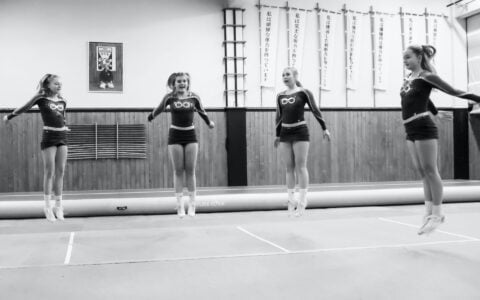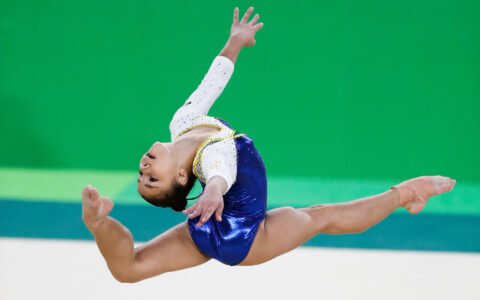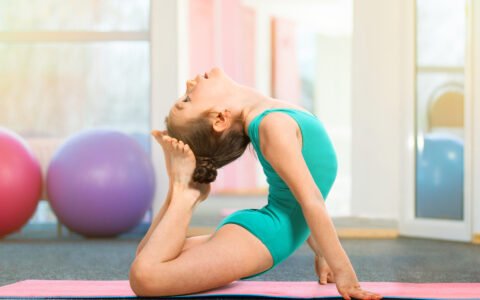Gymnastics is a fun and exciting sport with many physical, emotional, and mental benefits for both children and adults. The ancient Greeks first formalized the sport of gymnastics around the 6th Century BCE, or even earlier, and included it in the Olympics Games. Today, it is practiced in different parts of the world.
There are so many incredible benefits to gymnastics including increased fitness, flexibility, strength, balance, and confidence. Gymnastics also has mental and health benefits, such as improving the ability to learn, focus, and remember. It has been found to prevent Type-2 diabetes, obesity, and non-hereditary heart disease.
The sport of gymnastics has come a long way, and so has the understanding of the vital role it can play in human development. Let’s take a look at 30 benefits of gymnastics for adults and children.
1. Increases Flexibility
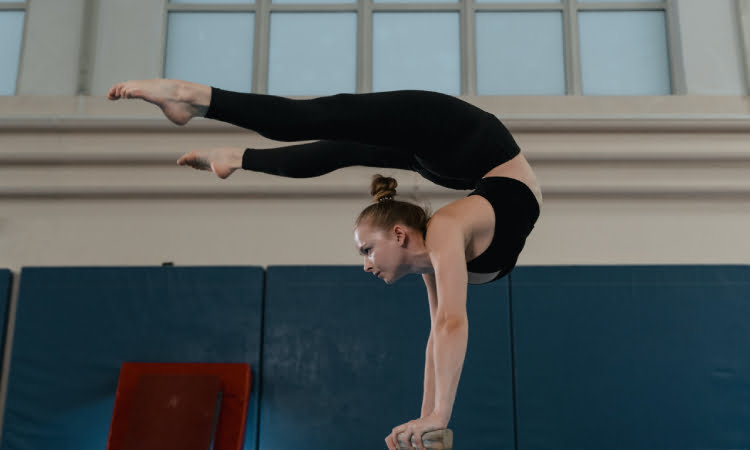
One of the most common benefits that people associate with gymnastics is flexibility. And it’s indeed a core element of the sport. Flexible muscles are longer and more elastic, which helps to improve agility, posture, and muscle coordination while also decreasing the risk of injury. To increase flexibility, gymnasts learn to perform a wide range of motions, such as backbends and splits.
2. Develops Balance and Precision
Gymnasts learn to run, jump, and perform acrobatic skills on many pieces of apparatus including a narrow balance beam that’s only 4 inches wide and 16.5 feet long. These exercises are important lessons in balance and control. Balance is essential for improving the body’s reflexive responses and overall alertness and reducing susceptibility to sprains and injuries from falls.
A 2017 study also found that balance training significantly improved the memory of adults as well as their understanding and perception of their surroundings.
3. Increases Bone Density
Gymnastics involves a lot of weight-bearing exercises and movements, from skills as simple as a handstand to more challenging skills such as front and back handsprings. Over time these types of activities are instrumental to improving bone density, which helps protect against injury and susceptibility to falls, fractures, and frailty later in life.
4. Reduces Depression
Gymnastics can also lower anxiety and depression. There are several reasons for this. When you engage in physical exertion, your body releases endorphins that make you feel good. Physical activity also distracts you from negative thoughts and feelings by forcing you to be in the moment and only focus on your body’s movements.
In 2018, a study conducted on postpartum women found that only four weeks of aerobic gymnastic exercise helped reduce feelings of fatigue and stress significantly and improve sleep quality. And although they engaged in the activities for only four weeks, the effects lasted for twelve weeks.
5. Elevates Spatial Awareness
Not many recognize the significance of spatial awareness as a skill, but spatial thinking is vital in the area of Science, Technology, Engineering, and Mathematics (STEM). Simply put, spatial awareness is the ability to mentally picture, understand, and navigate the space around you from different angles. Having a better sense of your surroundings has the added effect of enhancing your intuition.
In the world of gymnastics, you instinctively know if you haven’t leaped high enough to execute a move or if you’ve somersaulted too close to the edge of the floor. In other areas of life, spatial awareness provides you with a good sense of direction and also helps with driving vehicles.
6. Improves Memory
Gymnastic routines can be long and intricate, and gymnasts may need to remember several of them simultaneously. By regularly learning, performing, and repeating choreographed moves, children can significantly boost their memory skills and cognitive function.
Additionally, the act of exercising itself also helps to improve memory. Many studies show that a good memory increases learning, which leads to a reduction in stress and anxiety because understanding and recollection are easier.
7. Builds Core Strength
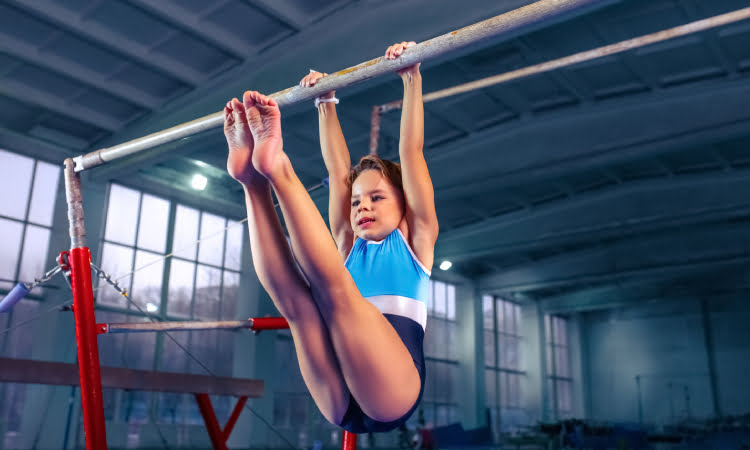
A strong core is essential in gymnastics. Every major drill in the sport involves the core muscles. Therefore it comes as no surprise that gymnastics develops core strength. A strong core helps with good posture, supports the back muscles, and protects gymnasts from injury.
8. Develops Problem-Solving Skills
Figuring out how to tweak a landing that isn’t going as planned or how to refine a routine that isn’t quite hitting the mark, gymnasts engage in problem-solving all of the time. Problem-solving is a valuable skill in both professional and personal life that helps people to face challenges confidently.
9. Increases Strength
Simple conditioning exercises such as leg lifts, chin-ups, and dips on steady rings, bars and other equipment are all resistance training exercises that gymnasts practice to build their core and overall strength. Strength training has incredible benefits for adolescents, including improving their general motor skills and overall muscle fitness, which involves muscle endurance and power. The result is often children with higher self-esteem because they can exert better physical control over their bodies and are simply stronger than their peers.
10. Encourages Mental and Physical Discipline
In gymnastics, it’s common to practice independently until you get a specific movement, jump, or an entire routine just right. This habit promotes mental fortitude and physical discipline that’s useful in other areas of life. Discipline helps children make good choices, and it also teaches them the valuable life skills of self-control and responsibility.
11. Teaches How To Overcome Fear

It’s remarkable how gymnasts can perform countless somersaults in the air and leaps on a balance beam, seemingly without any fear. These actions can be scary to even think about for non-gymnasts, but gymnastics teaches children to push past their fears and excel, starting from the bottom and working their way up. Gymnastics doesn’t only teach how to overcome the physical fear of falling, but also the fear of failing.
The outcome is that children have an increased ability to handle new and daunting tasks or circumstances with ease as adults.
12. Develops Creativity
As part of their gymnastics training, children learn to have an input or even choreograph their own routines, which helps build their creative muscles. Creativity is an essential skill that’s applicable to every single area of life, from technology and innovations to science and medicine, and of course, the arts and sports.
Creativity is the ability to think about things in new ways. It has multiple benefits, including enhancing a positive state of mind, strengthening cognitive flexibility and critical thinking, and making you more productive. Creativity also improves a person’s overall mental well-being.
13. Enhances Fitness
Fitness is an integral part of gymnastics, and it delivers a wealth of benefits, including improved heart and lung health, weight management, and a boost in mood and energy. It also increases the physical capacity of engaging in aerobic activities.
A 2021 study measuring the athletic benefits of gymnastics among children with an average age of nine found that both girls and boys who engaged in gymnastics significantly outperformed their peers in events such as the long jump and shuttle sprints.
14. Increases Resilience and Perseverance
What most people might commonly term as “failure” in other areas of life is a regular part of learning in gymnastics.
Given the level of complexity and precision required of many of the moves in the sport, mastering it can take quite a long time. As a result, during the process of gaining proficiency, gymnasts learn resilience and perseverance. They learn not to give up.
Resilience helps you to bounce back stronger and better in life from setbacks or disappointments, and perseverance is associated with good leadership and a greater likelihood of achieving your goals.
15. Encourages Teamwork and Communication
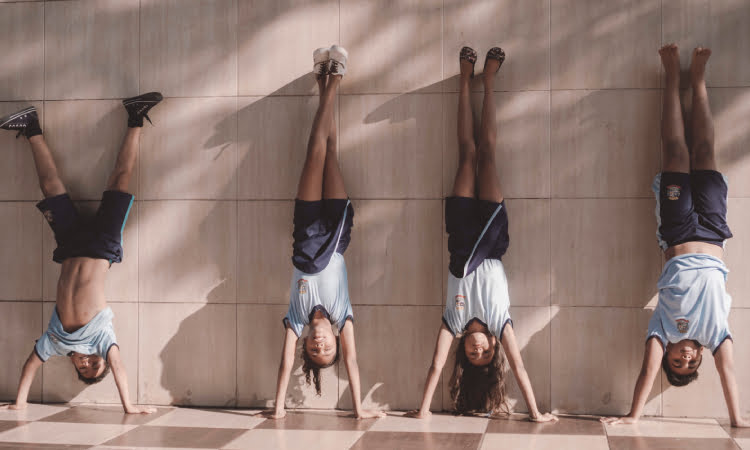
During training, gymnasts help each other when learning new skills, they work together to develop routines, and they encourage each other in performances. The act of collaboration not only improves their communication skills but also strengthens their ability to work together. Teamwork builds social skills and bonding.
Harvard Professor Amy Edmondson has also found that collaborating in teams enhances experimentation skills, cross-disciplinary problem solving, and the generation of ideas. As the famous saying goes: “If you want to go fast, go alone. If you want to go far, go together.”
16. Develops Rhythm
In women’s floor discipline, the gymnasts must leap, dance, and tumble in a choreographed routine set to music. These actions help build a sense of rhythm and fluidity in movement.. Rhythmic movement releases stress, encourages self-expression, and improves brain health and feelings of well-being.
Research conducted in 2002 also found that rhythm enhances body awareness and control and contributes to establishing personal identity.
17. Enhances Focus
Gymnasts cannot allow themselves to be distracted by anything when executing a routine. One wrong move or a momentary loss in concentration could lead to a fall or bad landing resulting in possible injury. When surrounded by noise and cheering crowds, the ability to drown it out and remain focused on the task ahead is key.
Gymnasts hone their levels of focus when working on learning and perfecting new moves. Consequently, with gymnastic training, children can improve their attention
18. Fosters Composure
Gymnasts are known for staying calm under pressure. Whether practicing alone or competing against others, they learn to control their nerves and channel their anxiety into their performance.
The skills gained in gymnastics, such as focus and breathing, enhance children’s ability to cope with stressful situations. As a result, children gain the ability to remain positive even when they’re not performing well.
Composure is essential in everyday life. It enables children to regulate their emotions in adverse situations with the understanding that their performance shouldn’t influence or define their sense of self-worth.
19. Cultivates Listening, Observation and Learning Skills
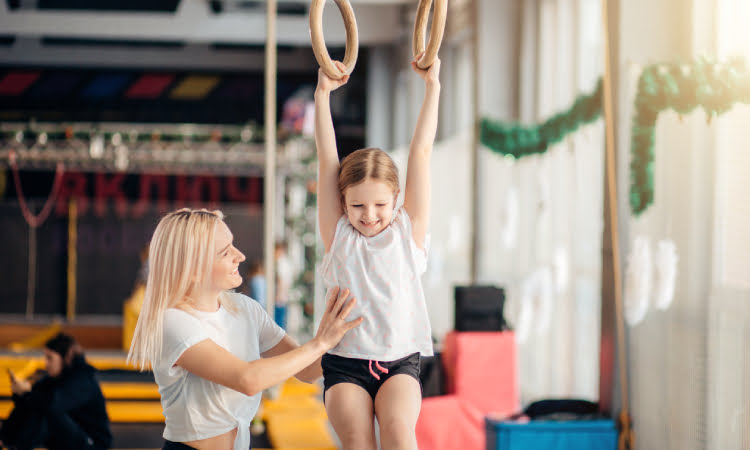
Watching, listening, and following instructions are important aspects of gymnastics training. To gain new skills and to perfect their technique, gymnasts have to pay close attention to their instructors and execute the exact movements that their trainer is showing them. This requirement strengthens their powers of observation and also develops a high attention span.
With most of the technology that children are exposed to today serving to decrease their attention span gradually, gymnastics can help offset some of those effects.
Through gymnastics, children also enhance their ability to learn and listen, which are powerful skills that improve understanding, mental engagement, and informed decision-making in everyday life. They’re also essential qualities in good leaders and managers.
20. Reduces Risk of Developing Asthma During Adolescence
Engaging in gymnastics also strengthens the body’s ability to protect itself from respiratory issues such as asthma. A 2000 study conducted over ten years involving children with an average age of 9 years old found that physical fitness significantly reduces the risk of developing asthma in adolescence.
21. Enhances Performance Skills
Often, gymnasts will have to perform routines in front of other people, perhaps during practice, a showcase or a competition.
Performance skills have a wealth of benefits that translate to other areas in life, such as knowing how to capture the audience’s attention and keep them engaged, as well as managing anxiety and pressure and maintaining focus. The act of performing also builds personal agency and a child’s sense of belief in their skills.
22. Improves Evaluation and Judgment Skills
To progress in gymnastics, children need to be able to evaluate and judge their performance objectively. They also need to understand their weaknesses and strengths as this helps them focus their training time and energy in the necessary areas. Evaluation and judgment skills are essential in life as they help children deliberate their options and increase their likelihood of making good decisions.
23. Instils Confidence
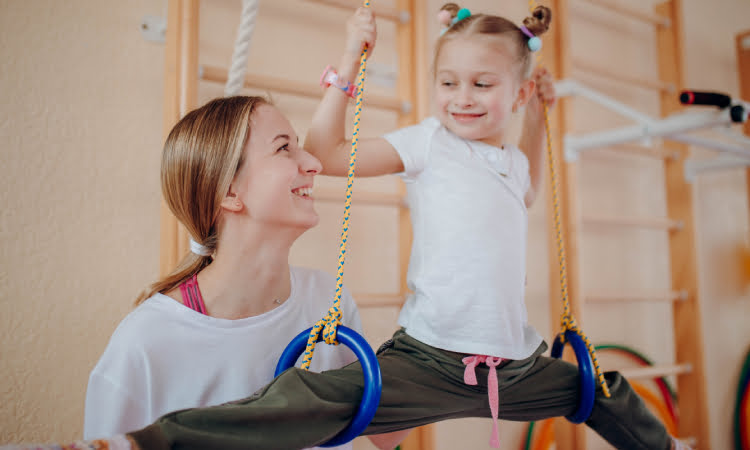
Gymnastics builds confidence. The ability to master awe-inspiring acrobatic movements that other people can only dream about helps foster a sense of achievement and self-esteem in children.
A good mix of fun and challenging, gymnastics encourages children to extend themselves mentally and physically beyond what they may have initially thought was possible for them to do. And with each skill that a child learns to conquer, their confidence grows.
Additionally, the skills learned in gymnastics are transferable to all other sports – flexibility, strength, focus, resilience, hard work, endurance, and many others. With a foundation in gymnastics, children can tackle all other sports with confidence and courage.
24. Develops Work Ethic
Learning gymnastics requires hard work. It involves early morning practices and dedicating time after school and on weekends for training with an instructor and on your own. This type of demand builds diligence and self-motivation. Through working to reach the goals they’ve set for themselves, children develop a strong work ethic and the ability to push themselves to improve.
25. Improves Timing and Time Management
Although two somewhat different concepts, gymnastics teaches children both timing and time management. Timing is essential in gymnastics – it’s what helps a gymnast know the right moment to leap from the uneven bars without falling or whether to squeeze in that last mid-air turn in their somersault before landing.
On the other hand, time management is the ability of a child to balance school, gymnastics, hanging with friends, plus other hobbies and recreational activities. It’s also the knack of prioritizing some activities over others. Time management is an essential skill applicable in other areas of life, including academics, relationships, and the workplace.
26. Improves Literacy

Perhaps quite unexpectedly, but not surprisingly, gymnastics promotes reading readiness among kindergartners. The main reason for this is that as children learn to follow the verbal instructions of their gymnastics teacher during early childhood, they’re developing their listening and comprehension skills.
These skills are of particular importance to early readers because they enable them to grasp the sounds and pronunciation of words quickly. Furthermore, physical movement helps to strengthen cognitive function through increased blood flow to the brain, which also boosts literacy skills.
27. Lowers Risk of Substance Abuse
According to research, gymnasts are less likely to indulge in alcohol or drug use. The high level of dedication and training that gymnastics requires and the physical and mental discipline that it instils in gymnasts make it less likely for them to engage in substance abuse behaviour.
28. Nurtures Goal Setting
Proficiency in gymnastics happens gradually with practice. The thrill that children experience when they eventually gain the ability to perform a new move that they couldn’t a week or two ago is a strong motivator for them. This progress encourages them to set more challenging goals for themselves to continue to learn and grow their skills.
29. Strengthens Emotional Intelligence Skills
Like many other sports, gymnastics teaches children to treat others with respect and handle situations with grace – although that’s not always the case with all athletes. Through gymnastics, children discover that even when they try their best, they can still have an off day. So they learn to be gracious when they do well and to stay positive when they don’t.
30. Encourages a Healthy Active Lifestyle
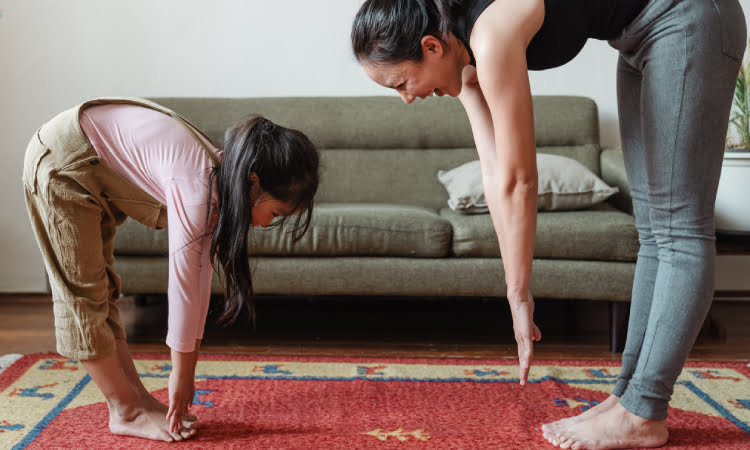
In addition to increasing fitness and strength, gymnastics also encourages healthy eating in children as it’s a habit that enhances performance. Eating the right foods serves as fuel for their bodies and helps gymnasts to keep in shape. Gymnasts also have lower rates of obesity, non-hereditary heart disease, and Type-2 diabetes, which health professionals commonly refer to as lifestyle diseases.
Frequently Asked Questions About Gymnastics
Why is Gymnastics So Important?
Gymnastics is important because it provides a strong physical and mental foundation for children and has numerous, incredible long-term health benefits for all. Skills learned in gymnastics are readily transferable to other areas of life and can help to make you a better athlete, student, friend, employee, innovator, and leader.
Is Gymnastics a Safe Sport?
Gymnastics is a very safe sport when carried out under the supervision of an experienced trainer. Additionally, the skills gained from gymnastics training, such as strength development, core building, and improving flexibility, help reduce the risk of injury in children.
What Is The Best Age To Start a Child in Gymnastics?
Children can start learning gymnastics as early as two years old, but they’ll mostly be learning very basic skills that will help them understand how to control their bodies and develop their listening skills.
Gymnastics should be encouraged at this young age to help with early years development. At this age, children can learn fine and gross motor skills which will aid in their physical development into their toddler years!
What To Look For in a Gymnastics Club for My Child?
Look for a club that focuses primarily on gymnastics. Although there are good clubs that also offer other sports, you’re most likely to find dedicated and passionate trainers in clubs that teach only gymnastics.
Additionally, the club should also have a wide selection of equipment in good condition and with safety measures all in place that offer children the opportunity to learn multiple skills.
Depending on what might be best for you and your child, you may prefer a club that offers evaluations and performances as a way of tracking and motivating the progress of its young gymnasts or one that only provides training.
To Summarise
Gymnastics is an important, well-rounded sport that can significantly improve the mental and physical health of children. When performed correctly, under supervision, it’s one of the safest sports for children to engage in, and it offers multiple benefits that can last a lifetime!

